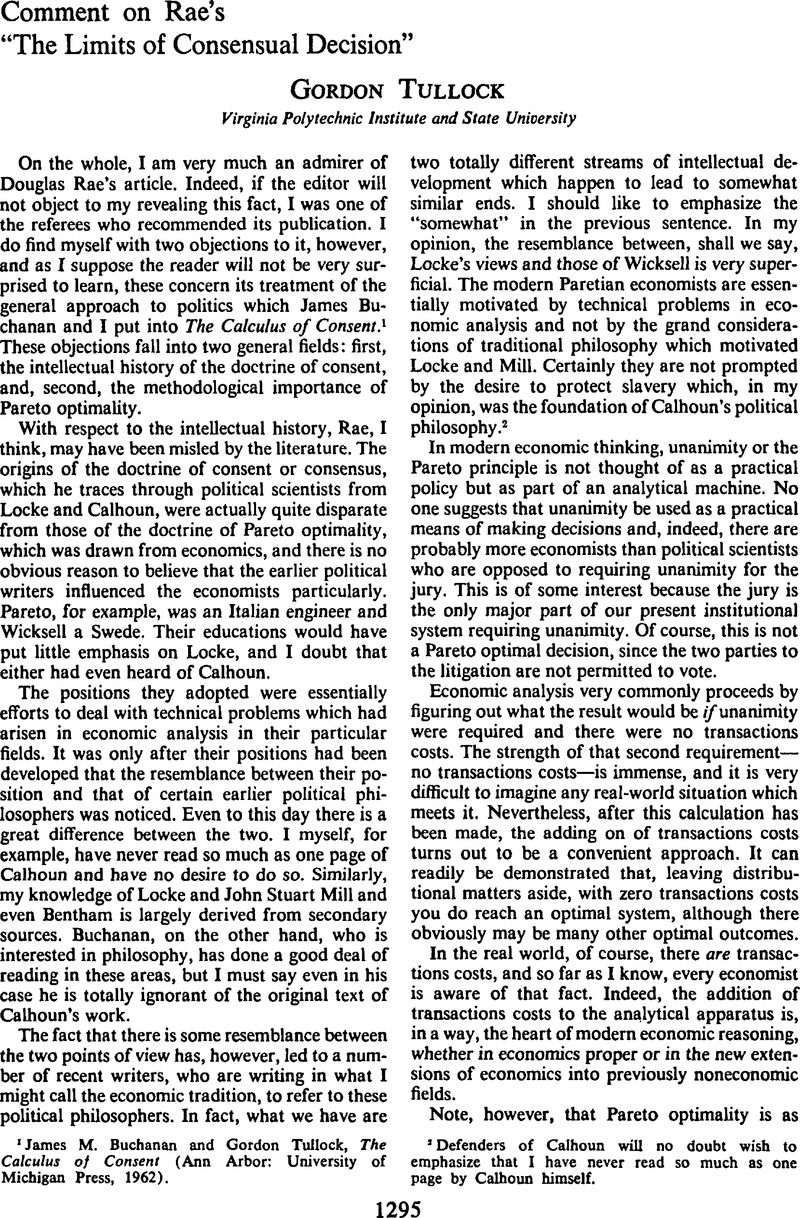Published online by Cambridge University Press: 01 August 2014

1 Buchanan, James M. and Tullock, Gordon, The Calculus of Consent (Ann Arbor: University of Michigan Press, 1962)CrossRefGoogle Scholar.
2 Defenders of Calhoun will no doubt wish to emphasize that I have never read so much as one page by Calhoun himself.
3 As a matter of fact, the market process is Pareto optimal in those cases in which there are no externalities. In cases in which all externalities are trivial (which is, after all, the common case for market transactions), it is a close approximation of Pareto optimality.
4 Rawls, John, A Theory of Justice (Cambridge, Mass.: Belknap Press of Harvard University Press, 1971)Google Scholar.
5 Hochman, Harold M. and Rodgers, James D., “Pareto Optimal Redistribution,” American Economic Review, 59 (09, 1969), 542–57Google Scholar. The whole discussion of the economics of income redistribution is summarized by Culyer, Anthony J., The Economics of Social Policy (New York: Dunellen, 1973)Google Scholar.
6 Brennan, Geoffrey, “Pareto Desirable Redistribution: The Non-Altruistic Dimension,” Public Choice, 14 (Spring, 1973), 43–68 CrossRefGoogle Scholar.
7 Calculated on the method suggested in Simon, Henry C., Personal Income Taxation (Chicago: University of Chicago Press, 1938)Google Scholar, rather than that used by the Internal Revenue Service.
8 This calculation is very rough and is based on preliminary figures. It might be that the point at which one begins taking 50 per cent under present circumstances would be $600 or even $700. Note that this is in addition to existing taxes.
9 It should be emphasized that the bulk of the income redistribution obtained in modern welfare states is not from the wealthy to the poor, but from certain members of the middle class to other members of the middle class. There is, indeed, some aid to the poor and some money removed from the wealthy, but this is a relatively modest phenomenon in most modern democracies. See Tullock, Gordon, “The Charity of the Uncharitable,” Western Economic Journal, 9 (12, 1971), 379–92Google Scholar.
10 Tullock, Gordon, The Logic of the Law (New York: Basic Books, 1971)Google Scholar.
Comments
No Comments have been published for this article.